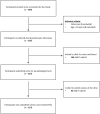Male Genital Schistosomiasis Along the Shoreline of Lake Malawi: Baseline Prevalence and Associated Knowledge, Attitudes and Practices Among Local Fishermen in Mangochi District, Malawi
- PMID: 34095041
- PMCID: PMC8175656
- DOI: 10.3389/fpubh.2021.590695
Male Genital Schistosomiasis Along the Shoreline of Lake Malawi: Baseline Prevalence and Associated Knowledge, Attitudes and Practices Among Local Fishermen in Mangochi District, Malawi
Abstract
Male genital schistosomiasis (MGS) is an often-overlooked chronic consequence of urogenital schistosomiasis (UGS) associated with Schistosoma haematobium eggs and associated pathologies in the genital system of afflicted men. Despite the first formal description of MGS in 1911 by Madden, its epidemiology, diagnostic testing and case management of today are not well-described. However, since several interactions between MGS and the Human Immunodeficiency Virus (HIV) are known, there is renewed public health interest in MGS across sub-Saharan Africa (SSA). To shed new light upon MGS in Malawi, a longitudinal cohort study was set up among fishermen along the southern shoreline of Lake Malawi in Mangochi District, Malawi, to document its prevalence and assess mens' knowledge, attitudes and practices (KAP). After providing informed written consent, fishermen (n = 376) aged 18+ years (median age: 30 years, range: 18-70 years) were recruited and submitted urine and semen for point-of-care (POC) field and laboratory diagnostic parasitological tests. Individual questionnaires were administered to assess their KAP, with praziquantel (PZQ) treatment provided to all participants. Baseline prevalence of MGS (S. haematobium eggs in semen) was 10.4% (n = 114, median: 5.0 eggs per ml, range: 0.1-30.0) while for UGS (S. haematobium eggs in urine) was 17.1% (n = 210, median: 2.3 eggs per 10 ml, range: 0.1-186.0) and 3.8% were positive by POC circulating cathodic antigen (POC-CCA), indicative of a Schistosoma mansoni infection. Just under 10% of participants reported having experienced symptoms associated with MGS, namely genital or coital pain, or haemospermia. A total of 61.7% reported previous difficulties in accessing PZQ therapy, with 34.8% having received PZQ therapy before. There was a significant correlation between MGS infection and the frequency of fishing in a week (rho = -0.25, n = 100, p = 0.01). In conclusion, MGS is prevalent among local fishermen yet knowledge of the disease is poor. We therefore call for improved availability and accessibility to MGS diagnostics, PZQ treatment within ongoing control interventions. This will improve the lives and reproductive health of men, their partners and communities in this shoreline environment of Lake Malawi.
Keywords: Lake Malawi; MGS; S. haematobium; fishermen; semen.
Copyright © 2021 Kayuni, Alharbi, Makaula, Lampiao, Juziwelo, LaCourse and Stothard.
Conflict of interest statement
SK was employed by MASM Medi Clinics Limited. The remaining authors declare that the research was conducted in the absence of any commercial or financial relationships that could be construed as a potential conflict of interest.
Figures




Similar articles
-
Case Report: Highlighting Male Genital Schistosomiasis (MGS) in Fishermen from the Southwestern Shoreline of Lake Malawi, Mangochi District.Am J Trop Med Hyg. 2019 Dec;101(6):1331-1335. doi: 10.4269/ajtmh.19-0562. Am J Trop Med Hyg. 2019. PMID: 31701858 Free PMC article.
-
How can schistosome circulating antigen assays be best applied for diagnosing male genital schistosomiasis (MGS): an appraisal using exemplar MGS cases from a longitudinal cohort study among fishermen on the south shoreline of Lake Malawi.Parasitology. 2019 Dec;146(14):1785-1795. doi: 10.1017/S0031182019000969. Epub 2019 Sep 23. Parasitology. 2019. PMID: 31452477 Free PMC article.
-
Pathological Abnormalities Observed on Ultrasonography among Fishermen Associated with Male Genital Schistosomiasis (MGS) along the South Lake Malawi Shoreline in Mangochi District, Malawi.Trop Med Infect Dis. 2022 Aug 5;7(8):169. doi: 10.3390/tropicalmed7080169. Trop Med Infect Dis. 2022. PMID: 36006261 Free PMC article.
-
A systematic review with epidemiological update of male genital schistosomiasis (MGS): A call for integrated case management across the health system in sub-Saharan Africa.Parasite Epidemiol Control. 2018 Nov 23;4:e00077. doi: 10.1016/j.parepi.2018.e00077. eCollection 2019 Feb. Parasite Epidemiol Control. 2018. PMID: 30662962 Free PMC article. Review.
-
Female genital schistosomiasis as a risk-factor for the transmission of HIV.Int J STD AIDS. 1994 Sep-Oct;5(5):368-72. doi: 10.1177/095646249400500517. Int J STD AIDS. 1994. PMID: 7819359 Review.
Cited by
-
Population genetics and molecular xenomonitoring of Biomphalaria freshwater snails along the southern shoreline of Lake Malawi, Malawi.Parasit Vectors. 2024 Dec 18;17(1):521. doi: 10.1186/s13071-024-06546-5. Parasit Vectors. 2024. PMID: 39696654 Free PMC article.
-
The parasitology of female genital schistosomiasis.Curr Res Parasitol Vector Borne Dis. 2022 May 27;2:100093. doi: 10.1016/j.crpvbd.2022.100093. eCollection 2022. Curr Res Parasitol Vector Borne Dis. 2022. PMID: 35719849 Free PMC article. Review.
-
Molecular Epidemiology and Assemblage Typing of Giardia duodenalis in School-Age Children Situated along the Southern Shoreline of Lake Malawi, Malawi.Am J Trop Med Hyg. 2023 Aug 7;109(3):626-639. doi: 10.4269/ajtmh.23-0156. Print 2023 Sep 6. Am J Trop Med Hyg. 2023. PMID: 37549892 Free PMC article.
-
Schistosomiasis Interventions in Africa: Assessment and Systematic Review.J Parasitol Res. 2025 Aug 13;2025:2125107. doi: 10.1155/japr/2125107. eCollection 2025. J Parasitol Res. 2025. PMID: 40842558 Free PMC article. Review.
-
Urban-rural disparity in risky sexual behavior, HIV knowledge, and healthy practices among men who have sex with men: A cross-sectional study in Southeast China.PLoS One. 2024 Nov 11;19(11):e0312006. doi: 10.1371/journal.pone.0312006. eCollection 2024. PLoS One. 2024. PMID: 39527536 Free PMC article.
References
-
- WHO . Schistosomiasis [Online]. Geneva, Switzerland: World Health Organization; (2018). Available online at: http://www.who.int/en/news-room/fact-sheets/detail/schistosomiasis (accessed 29th December 2018).
-
- Madden FC. Two rare manifestations of Bilharziosis. Lancet. (1911) 178:754–5. 10.1016/S0140-6736(00)51898-4 - DOI
Publication types
MeSH terms
LinkOut - more resources
Full Text Sources
Research Materials
Miscellaneous

